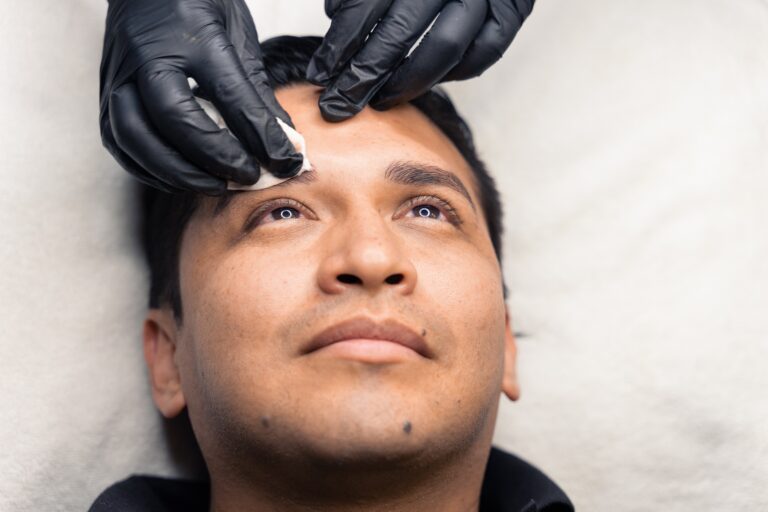ARTAS Robotic Hair Transplants: Everything You Need to Know
Alopecia is a common issue among middle-aged people. In the US alone, over 200,000 individuals undergo hair transplantation, hoping to recover their lost hair.
That said, as our medical knowledge advances, so do our technological means. ARTAS is a testament to the ever-improving methods of treating pattern hair loss.
So, if you’re thinking about getting a hair transplant, ARTAS may just be what you need. Stick with us, and we’ll explain everything about this procedure and the ARTAS hair transplant cost.
ARTAS Robotic Hair Transplant
An ARTAS is an innovative, AI-assisted hair restoration technique. It offers the quickest procedure possible that traditional hair restoration methods won’t be able to achieve.
What makes ARTAS unique is that it provides a minimally invasive yet highly effective hair transplantation technique—thanks to its apt artificial intelligence. Technology has grown so much that there are now websites, such as Arktan.com, dedicated to compiling the latest AI tools in an intuitive database.
Compared to hand-held hair transplantation, ARTAS uses robotic arms to harvest and transplant hair grafts. The technology that it utilizes makes it unrivaled in speed and precision.
While most would agree that traditional hand-held hair restoration can’t compete with the precision and accuracy of ARTAS, it’s still crucial to know its strengths and weaknesses.
Advantages of ARTAS
It’s natural to wonder about the hair loss treatment you’ll get. So, here are the primary advantages of ARTAS hair restoration:
1. Minimally Invasive
What sets ARTAS apart from traditional FUE and FUT is the precise process that produces the smallest possible cuts on the scalp. This feat enables less swelling and scarring on the donor and recipient areas of the transplant.
2. Virtually Painless
Aside from the non-invasive procedure, the programming of ARTAS AI drives it to move in the most gentle and controlled manner possible. For this reason, you can expect a virtually painless experience throughout the surgical procedure.
3. Short Surgical Time
The speed of ARTAS is superior to manual hair transplant surgeries. Its intelligent algorithm will only take hours on hair loss cases which a traditional FUE can take days and several sessions to complete.
4. Single Session
ARTAS robotic FUE transplant offers fast and permanent results in a single session. So, you won’t have to go through several sessions of FUE or FUT to achieve the desired lush and natural-looking hair.
Disadvantages of ARTAS
Although it’s cutting-edge technology, there are some challenges that ARTAS can’t overcome. Here are the disadvantages of this technology:
1. Hair Type Restriction
One downside to this technology that most people don’t know is its hair type restriction. It’s not suitable for all patients, as you can only use ARTAS on individuals with dark, straight hair.
This setback is due to the limitations of 3D mapping and stereoscopic vision. If you have light and curly hair, the AI won’t be able to scan your scalp for the best hair grafts to transplant.
2. Donor Site Limitations
Although fully automated, there are significant limitations to the areas that the robotic hands can reach. Unfortunately, it can only extract grafts from the back and side of the scalp.
In cases of severe balding affecting the back and sides of the head, ARTAS won’t be able to collect the necessary number of hair follicles. If you have this issue, you might need to look for other hair restoration methods.
ARTAS Hair Transplant Procedure
The whole process of an ARTAS hair transplant follows the basic steps of traditional FUE and FUT procedures. Thus, it still involves extracting hair follicles from a donor site and replanting them in the most suitable recipient area.
1. Mapping
Before the surgical procedure, the robot system will map your scalp using 3D imaging technology. This step will allow the AI to make a 3D model of your head.
2. Scanning
After finishing the map of your hairline, the system will use HD stereoscopic vision to scan your scalp’s hair follicles. Then, the AI will mark the best hair grafts with the most growth potential.
3. Extracting
When the AI identifies healthy follicles, it’ll start the extracting process. To harvest, ARTAS uses robotic arms for precise extraction while leaving the donor site as natural-looking as possible.
4. Transplanting
Immediately after extraction, the robot will look for the best recipient site to implant the collected hair follicles. ARTAS will implant the grafts while protecting the natural look of the recipient site.
ARTAS: Robot Hair Transplant Cost
Like most hair transplant procedures, the cost of an ARTAS hair restoration can depend on the severity of your alopecia. Extreme cases cost more because they require extensive surgery.
Generally, a single ARTAS session can cost anywhere from $11,000 to $12,000. That’s double the cost of a hand-held FUE or FUT session.
However, though ARTAS appears more costly at first glance, you’d only need a single session to address your hair loss issue. Taking that into account, this robot-assisted method is more cost-effective than manual FUEs.
For reference, a motorized FUE can cost between $4000 to $15,000 per session. Though you can choose less expensive clinics, the procedure usually requires several sessions over the course of weeks or months.
Neograft vs. ARTAS
Like ARTAS, Neograft is an advanced hair restoration technique. It’s a semi-automated surgery that utilizes a device for extracting and implanting hair grafts.
Unlike ARTAS, the tool used in this method doesn’t function on its own. Instead, the surgeon will control the wand-like device that “sucks” healthy follicles from the scalp.
Both procedures use follicular unit extraction (FUE) as a method of harvesting grafts. In a Neograft, however, the surgeon will manually pick and extract individual hair follicles.
Surgeons using a Neograft device won’t need to make incisions to transplant the harvested grafts as well. They’ll use a specialized tool to create the scalp openings and implant the grafts.
In terms of cost, Neograft is far cheaper than ARTAS. The average price of a single Neograft session is around $8000 to $9000, though you might need more than one session.
Summing Up
ARTAS offers one of the most efficient hair restoration surgeries. It uses artificial intelligence and advanced tools to produce natural-looking hair transplants with minimal side effects.
That said, albeit cutting-edge, there are still limitations to the automated nature of this technology. The severity of hair loss and your hair type can affect your suitability.
Finally, a single ARTAS session can be more costly than other hair restoration surgeries. However, if you meet all its requirements, you’d only need one session to cure your hair loss!







